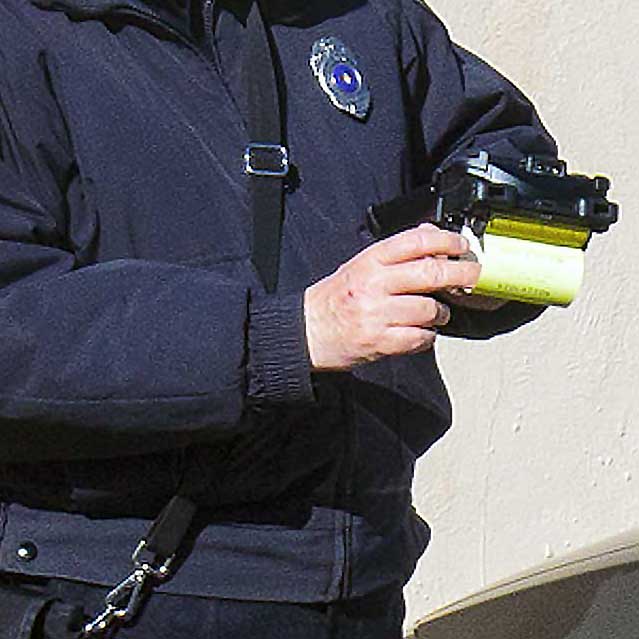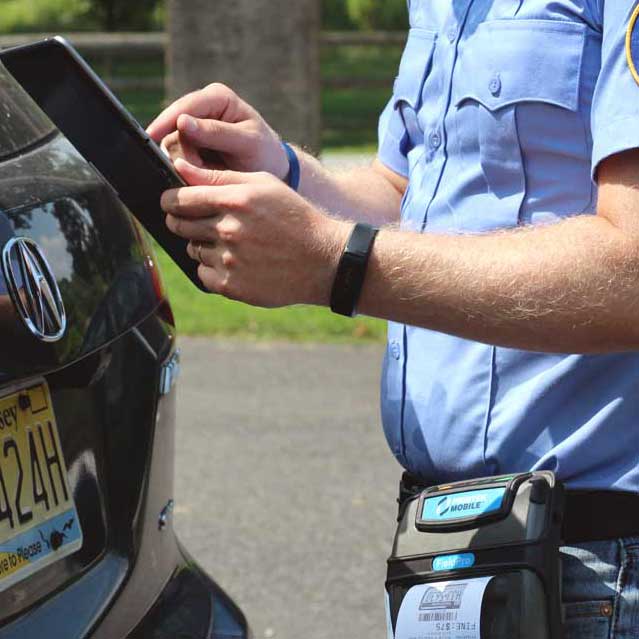Share This

In the world of Parking Enforcement, it is inevitable that enforcement officers will be required to carry equipment that allows them to perform their jobs whilst, hopefully, taking efficiency into consideration.
Traditionally, ticket writing may have required a few ticket booklets, a pen, and a piece of chalk but with a more modern, electronic approach dominating the enforcement world, departments are left with a choice: Go with a one piece, all-in-one mobile device, or a two piece (mobile device and separate printer) option.
So, which approach is best for your department? Does one solution have advantages over the other? If so, what are those advantages and what are the potential disadvantages associated with each approach? Having worked and managed the implementation of both one-piece and two-piece solutions here at United Public Safety over the last four years, I believe I have a unique and unbiased perspective on each. Here is some insight.
One-Piece Option

One-Piece Hardware options, like the CitePro and legacy N5 devices that United Public Safety has been offering for years now, provide departments and their modern Parking Enforcement Officers (PEOs) distinct advantages. PEOs are forced to carry a large amount of gear either strapped to a belt or shoulder harness. This gear could include radios, body cameras, coin collection bags and other items that may already make PEO uniforms somewhat bulky and heavy. Utilizing a one-piece solution is generally a better option for these officers, as the one-piece solution comes with multiple carry options (hand carry, carry case on the belt or carry case on a shoulder strap) as compared to a two-piece solution that adds not one, but two additional pieces of equipment that the officer must carry.
The CitePro, All-In-One devices that United Public Safety offers also include a hot swappable, supplemental battery that is inserted into the back of the device and works in tandem with the battery that is located inside of the Android device. While the primary function of this hot swappable battery is to provide power to the rugged housing components of the device (onboard printer, LED illuminator, hot keys, etc), the hot swappable battery can also provide supplemental power to the internal Android battery, allowing for longer up times between charges.
A one-piece solution also requires no Bluetooth pairing between the device and printer like a two-piece solution would traditionally require. The one-piece solution offers an integrated printer which has a hard connection to the Android device that is being used as the interface. This means the officer never has to go through the Bluetooth pairing process which can be unreliable if there are many Bluetooth capable devices in close proximity to the device. (If multiple Bluetooth devices are within range, this may cause a loss in connection between the Android device and Bluetooth printer, as these other devices may attempt to pair to the Android device automatically.)
One-piece solutions may also have a distinct advantage from a durability standpoint, as typically a one-piece solution will be contained within a rugged housing that is meant to withstand drops to concrete, inclement weather and overall physical abuse.
While these advantages make the one-piece solution an attractive option for departments, there are some disadvantages. For one, if any of the component(s) of the one-piece fails or requires repair or maintenance, the entire device is rendered useless until said maintenance or repair is completed. Some repairs may be “field serviceable”, meaning with proper instruction and guidance, you as the user may be able to troubleshoot, diagnose and repair the issue without sending the device for professional repair. However, if there is a legitimate hardware issue and the device must be professionally repaired, this means the entire device must be sent in for repair and your department is now without one enforcement device.
One-piece solutions are also restricted to using only the type of mobile device that the manufacturer has intended and fitted for the solution. So, if your department has one-piece solutions that are utilizing extremely dated mobile phones, you and your officers may be limited to the capabilities/limitations of the operating system that runs on the specific device.
Two-Piece Option

Several years ago, as electronic enforcement options were gaining traction, the two-piece solution became the standard. Two-piece solutions generally consist of a device (Android or other OS) that serves as the “Front-End” or “User Interface”. This device could be a cell phone, tablet or other PDA device that holds and runs the enforcement software. The device is typically either Wi-Fi or Bluetooth capable, which allows for it to be paired to a separate Wi-Fi or Bluetooth capable printer. Over the last several years, departments have been moving away from the two-piece solution and adopting the one-piece. However, the two-piece option has many advantages compared to the one-piece.
First, the two-piece solution is typically less expensive than the one-piece option, specifically because users can utilize devices that they already own or that can be purchased at a lower rate. This is referred to as a “Bring Your Own Device or BYOD” option, and for many departments that already own compatible mobile devices, this can be a huge cost savings. Purchasing Android or other OS devices and separate printers is also much less expensive than purchasing an all-in-one device, since manufacturers can substantially mark up the prices on those types of devices due to value added in the exterior housing and other electronic additions. This cost savings can allow for backup devices and printers to be purchased without breaking the bank. There are many new, relatively inexpensive Android devices on the market today that are already ruggedized and intended for enterprise use.
Another great option is to utilize rugged cases on some of the newer, consumer-based Android devices that have the most up-to-date feature sets such as the Samsung Galaxy Note 10. The Samsung Galaxy Note 10 device, inside of a rugged case and paired with a Bluetooth printer, is an excellent choice when considering the two-piece route. The Galaxy Note 10 provides users with state-of-the-art features such as:
- 16 MP Camera
- Octa-Core Processing unit
- A 6.3 inch Gorilla Glass Display
- A 3500 mAh internal battery that provides around 10 hours of up time between charges
With a two-piece solution, a department can keep the mobile device relevant because device providers such as Verizon allow for upgrades every two years. This means your department will not be stuck with old, out-of-date operating systems and can easily upgrade to the most up-to-date hardware. Of course, all provider plans are different, and this aspect will need to be further investigated by your specific department.
Another advantage to the two-piece option is less downtime when dealing with hardware issues. If a printer is broken or damaged during enforcement, a backup printer can always be paired to the mobile device while the damaged printer is sent in for repair. The same idea applies to the mobile device, as a backup device can then be paired to the printer. This equates to little or no downtime due to hardware repairs. Also, departments can take advantage of established relationships with cell phone providers to procure the device they want to use and receive discounted data plans based on negotiated rates for the entire department.
The disadvantages to the two-piece solution are fairly obvious. For one, you are requiring your PEOs to carry two pieces of equipment, rather than one. For officers that are already burdened with having to carry a lot of bulky equipment to begin with, this can be a deal breaker. Bringing your own devices can also create difficulties when repairs are necessary, as there may be no vendor or manufacturer to send the device to for repairs to be completed and a lack of warranty options. As previously mentioned, the potential Bluetooth connection issues should also be taken into consideration.
Conclusion
In the end, both the One-Piece and Two-Piece solutions are reliable options with some drawbacks to each. It really depends on your department’s needs, budget and preferences. There is no “right” answer. If you want a lot of flexibility in the hardware you utilize, then a two-piece may be the way to go. If you like the idea of having as little hardware as possible that your officer must carry, then you may want to consider a one-piece approach. Some departments may even implement a hybrid approach to get the best of both worlds. In any case, the best thing to do is research what will work best for you and your officers.
 Company
Company